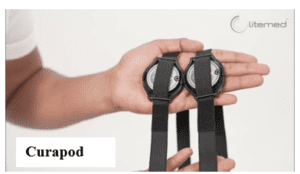Medication refers to a substance or a combination of substances that are used to prevent, diagnose, treat, or alleviate symptoms of a medical condition or disease. Medications work in various ways, such as by directly targeting the underlying cause of a condition (e.g., antibiotics fighting infection), relieving symptoms (e.g., pain relievers), or modifying the body’s processes (e.g., blood pressure medications). Medications can come in many forms, including pills, liquids, creams, injections, or inhalers, and they are usually prescribed by a doctor, although some can be bought over the counter without a prescription. The goal of medication is to improve health and quality of life by managing or curing illness, relieving symptoms, or controlling long-term conditions.
Cervical radiculopathy is a condition that occurs when a nerve root in the neck is compressed or irritated, leading to symptoms such as pain, numbness, tingling, or weakness in the neck, shoulders, arms, or hands. Effective medication plays a vital role in managing the symptoms of cervical radiculopathy, particularly pain and inflammation. Below is a breakdown of various medications for cervical radiculopathy and how they help alleviate nerve pain:

Cervical Radiculopathy Medication
- Pain Relief: Medications are primarily used to reduce the pain caused by nerve compression in cervical radiculopathy. These medications can help manage both acute and chronic pain.
- Types of Medication:
- NSAIDs (Non-Steroidal Anti-Inflammatory Drugs): These include drugs like ibuprofen or naproxen, which help reduce inflammation and relieve mild to moderate pain.
- Oral Steroids: A short course of oral corticosteroids may be prescribed to reduce inflammation around the compressed nerve, especially if there is significant swelling causing pain.
Medication for Cervical Radiculopathy
- Muscle Relaxants: When muscle spasms accompany cervical radiculopathy, muscle relaxants such as cyclobenzaprine or methocarbamol may be prescribed. These help relax the muscles surrounding the affected area, providing relief from spasms that could be worsening the pain.
- Antidepressants and Anticonvulsants: Medications like amitriptyline (a tricyclic antidepressant) and gabapentin or pregabalin (anticonvulsants) are often used for nerve pain. They work by altering nerve signals and reducing the pain associated with nerve compression.
Cervical Radiculopathy Nerve Pain Medication
- Nerve-Specific Medications: For chronic nerve pain, certain medications target nerve dysfunction directly. These medications help modulate the nervous system to reduce the sensation of pain:
- Gabapentin and Pregabalin: These are commonly prescribed to manage neuropathic pain. They help by stabilizing overactive nerves that may be causing pain due to nerve compression.
- Antidepressants: Tricyclic antidepressants like amitriptyline or selective serotonin-norepinephrine reuptake inhibitors (SNRIs) like duloxetine are also prescribed to reduce nerve pain, as they affect neurotransmitters involved in pain signalling.
Cervical Radiculopathy Pain Medication
- Opioids (last resort): In severe cases, opioids may be prescribed for short-term use to manage severe pain, but these are typically avoided due to the risk of dependency and side effects. Medications like oxycodone or hydrocodone are used sparingly, often when other treatments have not provided sufficient relief.
- Topical Analgesics: For localized pain, topical medications like lidocaine patches or capsaicin cream can be applied directly to the affected area to provide pain relief.
Summary
The medication used for cervical radiculopathy focuses on relieving pain, reducing inflammation, and managing nerve pain. This can include NSAIDs, muscle relaxants, antidepressants, anticonvulsants, and in some cases, opioids for short-term relief. Nerve pain medications like gabapentin and pregabalin are particularly effective in treating nerve-related pain. These medications are often used alongside other treatments like physical therapy or the use of medical devices (such as Curapod) to help patients recover and manage symptoms.

Curapod is a therapeutic device that utilizes electrical stimulation to help manage pain, muscle tension, and inflammation. It works by delivering controlled electrical impulses to specific areas of the body, promoting muscle relaxation, improving blood circulation, and reducing inflammation. This type of treatment is often used for conditions like musculoskeletal pain, nerve compression, and muscle spasms.
The device is non-invasive, portable, and can be used at home or in conjunction with other treatments like physical therapy or rehabilitation exercises. Curapod is particularly useful for people with conditions such as cervical radiculopathy, ankylosing spondylitis, or myofascial pain syndrome, as it helps alleviate pain caused by nerve irritation or muscle tightness.
By stimulating the muscles and tissues in the affected areas, Curapod can provide immediate relief from discomfort, enhance mobility, and support faster recovery. It is considered a complementary therapy that works alongside traditional treatments, providing individuals with an additional non-pharmacological option to manage chronic pain and improve their quality of life.
References
- National Institute on Drug Abuse (NIDA), 2020. Medications. Available at: https://nida.nih.gov/research-topics/medications [Accessed 16 February 2025].
- Mayo Clinic, 2020. Medications. Available at: https://www.mayoclinic.org/healthy-lifestyle/consumer-health/expert-answers/medications/faq-20058457 [Accessed 16 February 2025].


